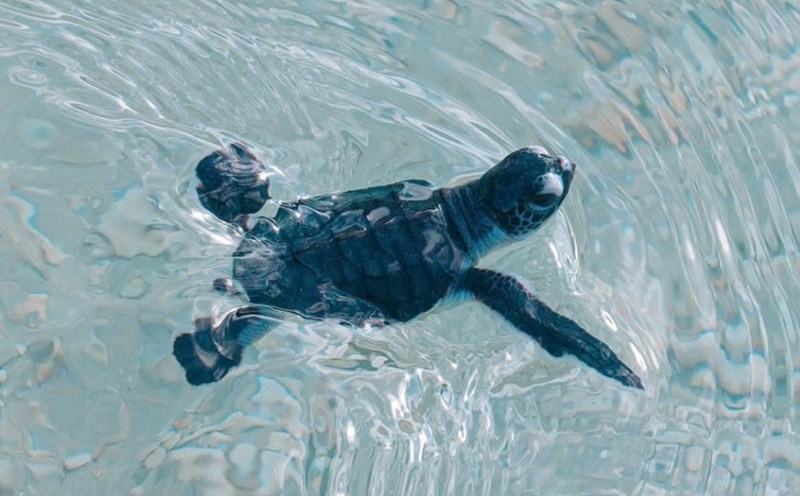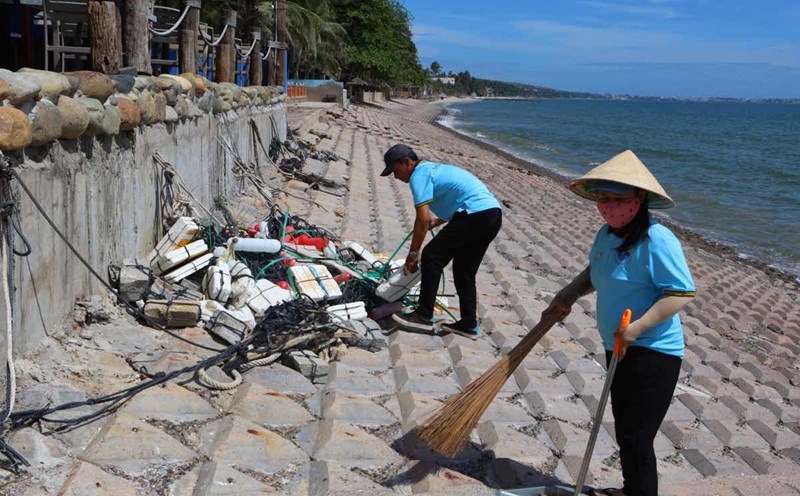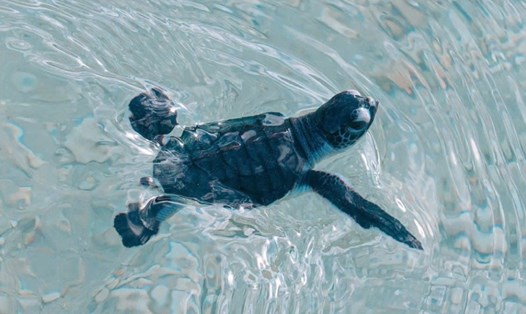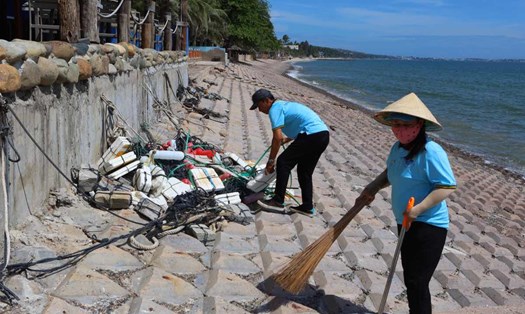Magical Journey
Sea turtles, an indispensable part of the ocean ecosystem, play an important role in protecting coral reefs, sustaining the life of seagrass beds and regenerating natural nutrients. The presence of sea turtles is a reliable measure of the health of the marine environment. In recent years, famous beaches of Binh Dinh such as Cu Lao Xanh, Nhon Ly and Nhon Hai have welcomed the return of special guests from the ocean - green turtles. This is one of the species classified as "endangered" in the Red List of the International Union for Conservation of Nature (IUCN).
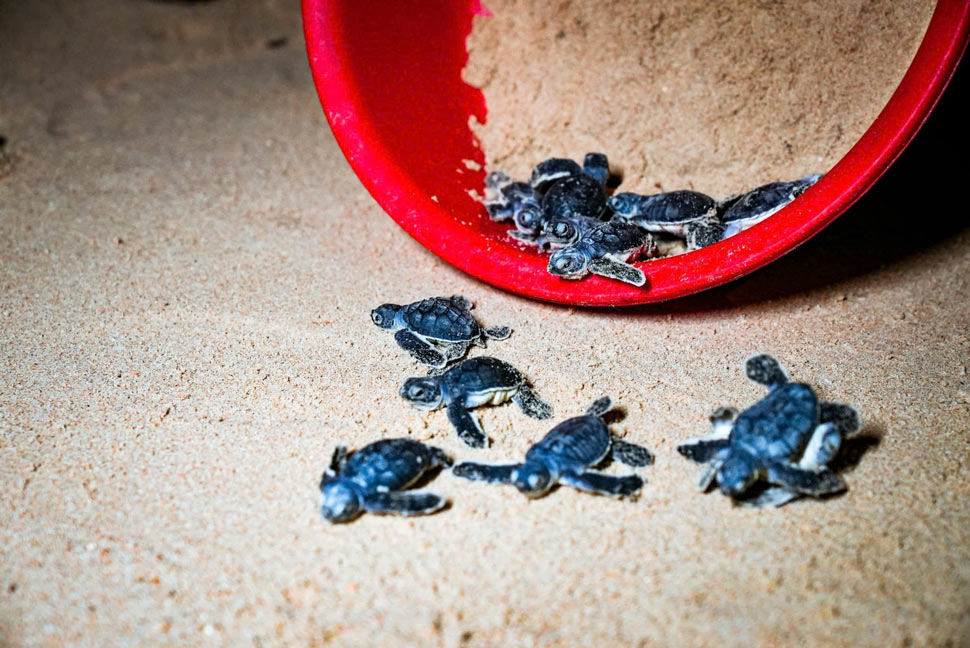
From May to August 2024 alone, there were 8 sea turtles coming to the beaches in Binh Dinh to nest and lay eggs. Of these, 3/7 nests have successfully hatched, giving birth to 169 healthy baby turtles. More specifically, the mother turtles returning to Binh Dinh today are the generation of baby turtles that were born on the beaches of the martial arts land, 20-30 years ago. The journey back to their "birthplace" to reproduce is a miraculous instinct of sea turtles, reflecting the deep attachment between sea turtles and their habitat.
Gradually the egg laying season
Vietnam is home to five rare species of sea turtles: the Green Turtle, the Hawksbill Turtle, the Green Turtle, the Loggerhead Turtle, and the Leatherback Turtle. All of these species are facing extinction and have been listed in the IUCN Red List, becoming priority protection objects in the list of endangered wildlife. For thousands of years, these "ocean warriors" have contributed to maintaining ecological balance, but now they are quietly facing harsh challenges.
According to studies by IUCN and the Marine Environment Research Institute, the number of sea turtles laying eggs in Vietnam has declined dramatically from 10,000 individuals per year in the 1980s to only 450 individuals in 2019. Most of the remaining individuals are now concentrated mainly in Con Dao, where about 425 turtles come to the nesting ground every year. This number reflects a serious decline in numbers, as well as an urgent warning about the future of the turtle species. An IUCN survey has shown that leatherback and hawksbill turtles have completely disappeared from the beaches of the North and Central regions. The main cause of this decline is the strong development of coastal tourism, resorts, restaurants and infrastructure "sprouting like mushrooms" on the beaches, gradually narrowing the living space of this species.
Another cause for concern is the severe destruction of coral reefs and seagrass beds in many coastal areas of Vietnam. These places are the main habitats of sea turtles, and this destruction leads to a decrease in food and living space for marine animals. In addition, ocean plastic pollution is becoming a serious threat to living creatures, including sea turtles. Throughout their life cycle, sea turtles face countless dangers. Although they live mainly underwater, they are still at risk of dying from lack of oxygen when trapped in nets for 2 to 6 hours. The survival battle between sea turtles and deadly nets is becoming an important factor, pushing this species closer to the brink of extinction if there are no effective protection measures.
Sea turtle conservation, enhancing tourism
Tourism is the main economic sector of Binh Dinh province, but to develop sustainably, protecting nature and marine ecosystems is extremely important. Faced with the challenge of combining tourism development with sea turtle conservation, Binh Dinh is making efforts to implement effective solutions, including protecting nesting grounds to protect this rare animal species.
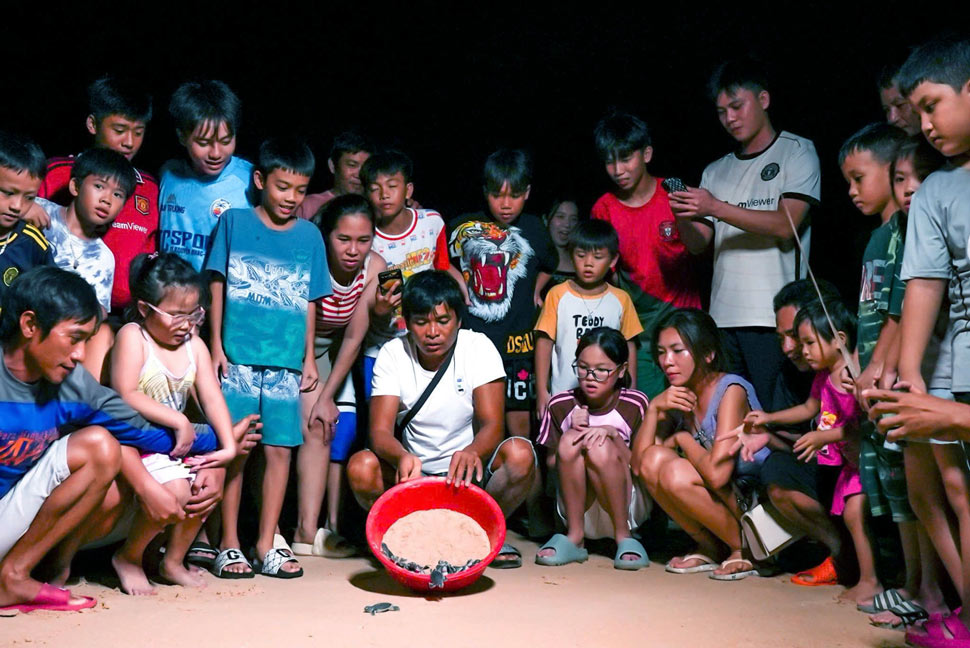
In 2022, Quy Nhon City approved a temporary planning for Nhon Hai beach with an area of up to 14.67 hectares, divided into separate areas: Boat anchorage area, tourist service area and turtle breeding area. In particular, the turtle breeding area has an area of over 9,800 square meters and absolutely prohibits all swimming, entertainment and recreational activities, to ensure a quiet space for sea turtles to lay eggs.
Visitors will be guided on how to observe turtles gently, without affecting the reproductive process. After birth, baby turtles are also "guided" back to the sea by the locals and tourists. In particular, the community tourism development project in Nhon Hai commune was approved in March 2024, making sea turtle egg-laying a part of ecotourism. Ecotours will be combined with conservation activities such as cleaning up trash and releasing baby turtles, thereby connecting local cultural values and environmental protection.
In addition, local communities also play a key role in environmental protection, from protecting turtle nests to participating in activities to reduce plastic waste and raise awareness about sea turtle protection. Close coordination between the government, the community and tourists will be the foundation for Binh Dinh to become a model of sustainable tourism, where sea turtle conservation and economic development can go hand in hand, contributing to the long-term development of the province.
(Article from the special publication Spring Labor of Central Highlands - Central Region 2025)

